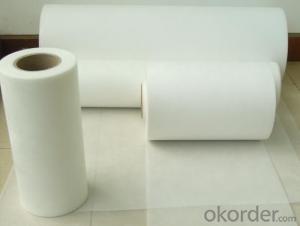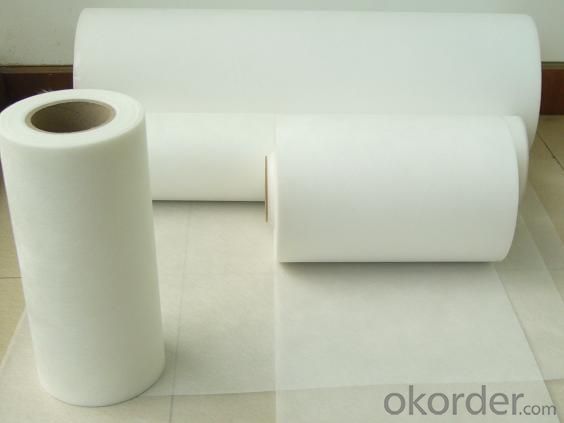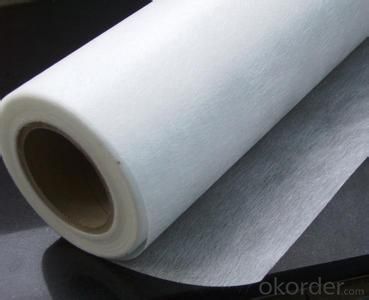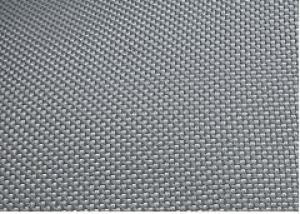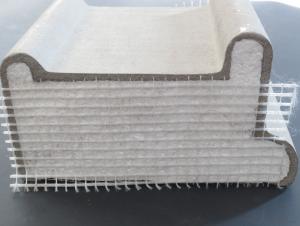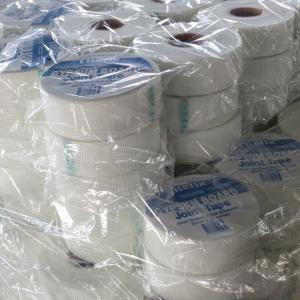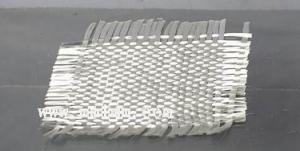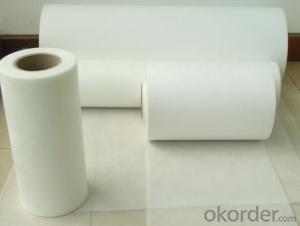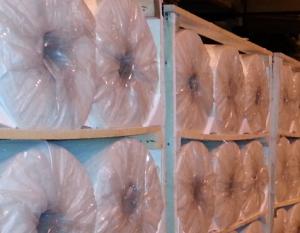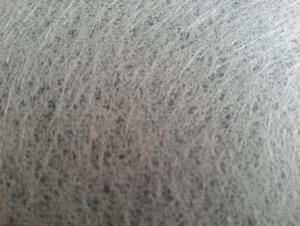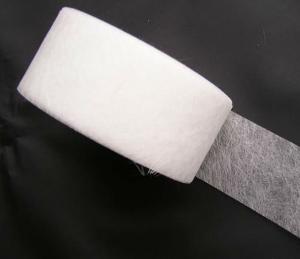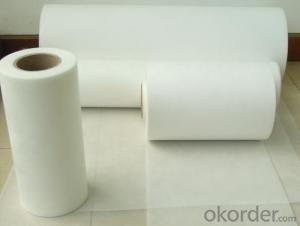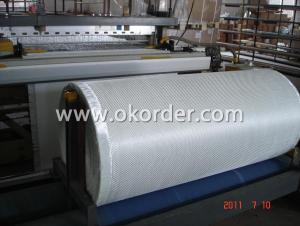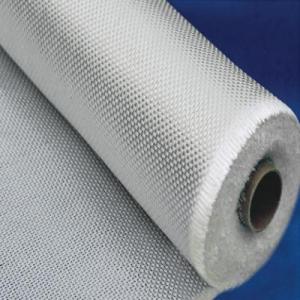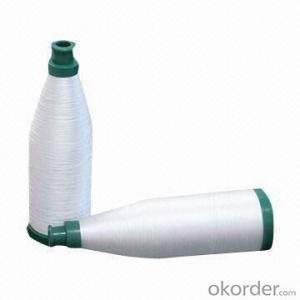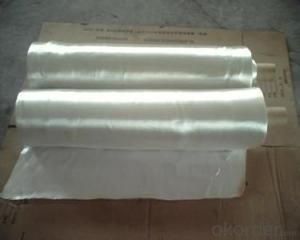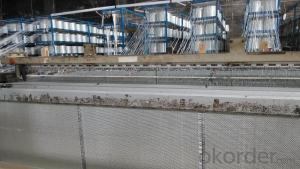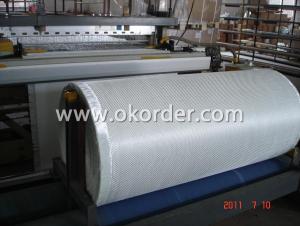Fiberglass Fabrics Surface Tissue Mat
- Loading Port:
- China Main Port
- Payment Terms:
- TT or LC
- Min Order Qty:
- 144000 m²
- Supply Capability:
- 1440000M2 Per Month m²/month
OKorder Service Pledge
OKorder Financial Service
You Might Also Like
1.Brief Introduction1.Brief Introduction
Surfacing Tissue mainly used in the surface layers of FRP products. It features even Fiber distribution, soft feel, level and smooth fiber surface, less glue content, quick resin soak and good pattern fitness. It can improve the product surface property on corrosion resistance, compressive strength, seepage resistance, and longer service life. It is also suitable for spraying; pattern pressing and other FRP pattern technology.
2.Characteristics
Fast breakdown in styrene
Fiber dispersed evenly
Low binder content
Superior acid corrosion resistance
3.Specifications
Item | Unit | Specification |
Area Weight | g/m2 | 30+/-3 |
Binder Content | % | 6-9 |
Tensile Strength MD | N/125px | ≥35 |
Soaking time | S | ≤10 |
Moisture content | % | ≤0.5 |
Width length
| mm
| 1270
|
Roll Diameter
| m | 300
|
Special specification can be produce according to customer requirements.
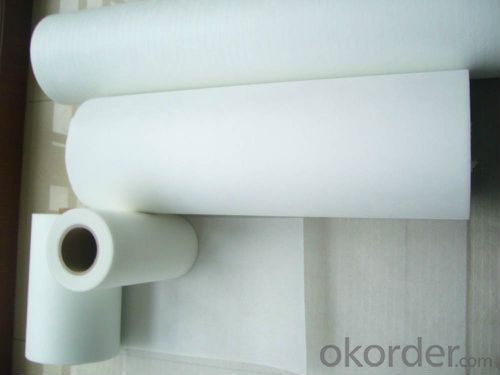
4.FAQ
a.Package
Each Surface Tissue is wound onto a paper tube which has an inside diameter of 76mm and the mat roll has a diameter of 330mm. The mat roll is wrapped up with plastic film,and then packed in a cardboard box or wrapped up with kraft paper. The rolls can be vertically or horizontally placed. For transportation, the rolls can be loaded into a cantainer directly or on pallets.
- Q: Can fiberglass fabrics be used for insulation in automotive engines?
- Yes, fiberglass fabrics can be used for insulation in automotive engines. They have excellent thermal insulation properties, are resistant to high temperatures, and are commonly used to prevent heat transfer and reduce noise in engine compartments.
- Q: Is fiberglass fabric suitable for making backpacks and bags?
- Yes, fiberglass fabric is suitable for making backpacks and bags. It is known for its exceptional strength, durability, and resistance to tearing or puncturing. Additionally, fiberglass fabric is lightweight and has excellent insulation properties, making it an ideal choice for outdoor gear like backpacks and bags.
- Q: How is fiberglass fabric used in the manufacturing of sports equipment?
- Fiberglass fabric is commonly used in the manufacturing of sports equipment due to its unique properties and advantages it offers. One of the main uses of fiberglass fabric in sports equipment is for reinforcement purposes. The fabric is often layered and combined with resin to create a strong and durable composite material that is lightweight yet sturdy. In the production of sports equipment such as tennis rackets, golf clubs, and hockey sticks, fiberglass fabric is used to enhance the strength and stiffness of the product. The fabric is layered and bonded with other materials, such as carbon fiber, to create a composite structure that has excellent flexural strength and resistance to impact. This allows athletes to achieve greater power and control during their performance. Additionally, fiberglass fabric is also used in the manufacturing of protective gear for various sports. Helmets, shin guards, and body armor often incorporate fiberglass fabric due to its ability to absorb and distribute impact energy. The fabric's high tensile strength and resistance to tearing make it an ideal material for ensuring the safety of athletes during high-contact sports. Furthermore, fiberglass fabric is also employed in the production of sports equipment that requires waterproof or weather-resistant properties. For example, in the manufacturing of sailboards, canoes, and kayaks, the fabric is used to provide a protective layer that prevents water penetration. This helps to improve the durability and longevity of the equipment, enabling athletes to use them in various weather conditions without compromising their performance. In summary, fiberglass fabric plays a crucial role in the manufacturing of sports equipment by providing reinforcement, enhancing strength and durability, ensuring athlete safety, and enabling weather resistance. Its versatile properties make it an essential component in the production of a wide range of sports gear, contributing to better performance, protection, and overall enjoyment for athletes around the world.
- Q: How does fiberglass fabric compare to other fabric materials in terms of cost?
- The cost of fiberglass fabric can vary depending on several factors, including quality, thickness, and how it is used. In general, fiberglass fabric is usually more expensive than traditional fabrics like cotton or polyester. However, when compared to specialized industrial fabrics like Kevlar or carbon fiber, fiberglass fabric often provides a more affordable option. The reason for fiberglass fabric's affordability is mainly because it is widely available and produced at a relatively low cost. Moreover, the durability and long lifespan of fiberglass fabric can lead to cost savings in the long term, as it may require fewer replacements or repairs compared to other fabric materials. Overall, although fiberglass fabric may not be the most inexpensive fabric option, it is often considered a cost-effective choice for various applications.
- Q: How do fiberglass fabrics perform in terms of abrasion resistance?
- Fiberglass fabrics are known for their exceptional abrasion resistance properties. Due to the nature of the material, which consists of fine fibers of glass woven together, they offer high resistance to wear and tear caused by rubbing or scraping against rough surfaces. This makes fiberglass fabrics highly durable and suitable for applications that require protection against abrasion, such as industrial and automotive sectors. Additionally, fiberglass fabrics often have a smooth surface finish, further enhancing their ability to withstand friction and maintain their integrity over time. Overall, fiberglass fabrics are considered to be excellent performers in terms of abrasion resistance.
- Q: How is fiberglass fabric stored and handled?
- Fiberglass fabric should be stored and handled with care to maintain its quality and prevent any damage. When it comes to storage, it is recommended to keep the fabric in a cool, dry place to avoid exposure to moisture or extreme temperature fluctuations. Ideally, it should be stored in a sealed bag or container to protect it from dust, dirt, and any potential contaminants. When handling fiberglass fabric, it is important to wear protective gloves to prevent any irritation or skin reactions. Additionally, wearing safety goggles or a face shield is recommended to protect the eyes from any loose fibers. During transportation or handling, it is advisable to avoid any sharp objects or rough surfaces that can cause tears or abrasions to the fabric. Care should be taken to avoid any unnecessary bending or folding, as this can lead to permanent creases or weak spots in the material. If the fabric needs to be cut or trimmed, it is recommended to use sharp scissors or a utility knife to ensure clean and precise cuts. It is also advisable to work in a well-ventilated area or wear a dust mask to minimize the inhalation of any loose fibers. In summary, fiberglass fabric should be stored in a clean and dry environment, handled with protective gear, and protected from any potential damage during transportation or cutting. By following these guidelines, the lifespan and quality of the fiberglass fabric can be preserved.
- Q: How is fiberglass fabric stored and transported?
- Fiberglass fabric is typically stored and transported in a way that ensures its protection and preservation. Firstly, it is important to keep the fabric in a dry and temperature-controlled environment to prevent moisture absorption and mold growth. The fabric rolls are usually stored vertically, on pallets or racks, to avoid any unnecessary pressure that may lead to deformation or damage. When it comes to transportation, fiberglass fabric is typically shipped in rolls. These rolls are often packaged in protective plastic wrap or bags to shield them from dust, dirt, and potential water damage during transit. Additionally, the rolls may be placed in sturdy cardboard boxes or placed on pallets to provide further support and prevent any shifting or movement during transportation. During transit, it is crucial to handle the fabric rolls with care to avoid any unnecessary stress or impact that may lead to tears or damages. This includes securing the rolls in the transportation vehicle using straps or other securing mechanisms to prevent movement and potential damage. Overall, proper storage and transportation of fiberglass fabric involve maintaining a suitable environment and taking precautions to protect the fabric from external elements and physical stress. By following these guidelines, the integrity and quality of the fiberglass fabric can be preserved, ensuring it arrives at its destination in optimal condition.
- Q: What are the different types of fiberglass fabrics available?
- There exists a variety of fiberglass fabrics that possess distinct characteristics and serve different purposes. These include: 1. Woven fiberglass fabric: This particular type is the most prevalent, comprising tightly woven fiberglass strands. It is lightweight, flexible, and exhibits excellent strength and fire resistance. Woven fiberglass fabric finds common usage in boat building, aerospace components, and insulation. 2. Non-woven fiberglass fabric: This fabric is formed by bonding randomly oriented fiberglass fibers together. It is frequently employed as a reinforcement material in composite structures, such as wind turbine blades, automotive parts, and sports equipment. 3. Knitted fiberglass fabric: Knitted fiberglass fabric is the result of interlocking loops of fiberglass yarns, resulting in a flexible and stretchable material. It is commonly utilized in applications that necessitate flexibility and conformability, such as the production of thermal insulation blankets and protective clothing. 4. Chopped strand mat: Chopped strand mat is created by randomly aligning short fiberglass strands and bonding them with a binder. It is predominantly used as a reinforcement material in hand lay-up and spray-up processes for manufacturing fiberglass molds, boat hulls, and automotive body panels. 5. Roving fabric: Roving fabric is produced by arranging continuous strands of fiberglass parallel to one another and bonding them together. It is frequently employed as a reinforcement material in filament winding and pultrusion processes for manufacturing pipes, tanks, and structural profiles. In addition to these types, variations of fiberglass fabrics are also available, including those with specialty coatings or treatments to enhance properties like water resistance or electrical conductivity. The selection of a specific type of fiberglass fabric depends on the desired application and performance requirements.
- Q: Can fiberglass fabric be used for insulation in telecommunications cables?
- Yes, fiberglass fabric can be used for insulation in telecommunications cables. It is commonly used due to its excellent thermal and electrical insulation properties, as well as its resistance to fire and chemicals. Additionally, fiberglass fabric provides mechanical strength and durability, making it an ideal choice for insulation in telecommunications cables.
- Q: Is fiberglass fabric flame resistant?
- Yes, fiberglass fabric is flame resistant.
Send your message to us
Fiberglass Fabrics Surface Tissue Mat
- Loading Port:
- China Main Port
- Payment Terms:
- TT or LC
- Min Order Qty:
- 144000 m²
- Supply Capability:
- 1440000M2 Per Month m²/month
OKorder Service Pledge
OKorder Financial Service
Similar products
Hot products
Hot Searches
Related keywords
